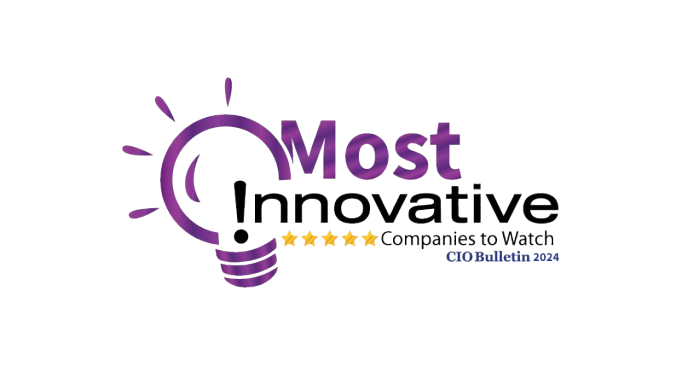CRM Integrations: Streamline Your Business Processes and Maximize Efficiency
May 20, 2023
In today's fast-paced business landscape, maintaining strong relationships with customers is crucial for success. Customer Relationship Management (CRM) systems have emerged as powerful tools to centralize and manage customer data effectively. However, to harness the full potential of a CRM system, it is essential to integrate it with other business applications and platforms. This article explores the concept of CRM integrations, their types, benefits, popular examples, considerations for selection, implementation process, challenges, and best practices.
Understanding CRM Integrations
2.1 Definition of CRM Integrations CRM integrations refer to the process of connecting a CRM system with other software applications or platforms to facilitate seamless data exchange and workflow automation. By integrating a CRM system with various tools and systems, businesses can achieve a unified view of customer information, enhance collaboration, and streamline their processes.
2.2 Importance of CRM Integrations CRM integrations play a vital role in optimizing business operations. They enable organizations to consolidate customer data from multiple sources, eliminate data silos, and improve cross-functional collaboration. With integrated systems, businesses can enhance customer experiences, drive sales, and gain valuable insights for strategic decision-making.
Types of CRM Integrations
3.1 API Integrations API (Application Programming Interface) integrations are a common method used to connect CRM systems with other software applications. APIs allow different systems to communicate and share data in real-time. By leveraging APIs, businesses can synchronize data, automate processes, and provide a seamless user experience across various platforms.
3.2 Third-Party Integrations Third-party integrations involve connecting a CRM system with external software solutions provided by third-party vendors. These integrations extend the functionalities of a CRM system, allowing businesses to incorporate specialized tools such as marketing automation platforms, email marketing software, and customer support systems.
3.3 Custom Integrations Custom integrations involve developing tailored connections between a CRM system and specific internal applications unique to a business. This type of integration offers maximum flexibility and customization, enabling businesses to align their CRM system with their unique processes and requirements.
Benefits of CRM Integrations
4.1 Streamlined Data Management Integrating a CRM system with other applications ensures that customer data remains consistent and up-to-date across the organization. It eliminates the need for manual data entry and reduces the risk of errors. By streamlining data management, businesses can improve data accuracy, enhance reporting capabilities, and make more informed business decisions.
4.2 Improved Productivity CRM integrations automate repetitive tasks, such as data synchronization, lead capturing, and contact management. By automating these processes, businesses can save time, reduce manual effort, and increase overall productivity. Employees can focus on high-value activities, such as engaging with customers and nurturing relationships, leading to improved efficiency and effectiveness.
4.3 Enhanced Customer Experience Integrating CRM with other customer-facing applications allows businesses to provide personalized and seamless experiences. By having a holistic view of customer interactions and preferences, organizations can deliver targeted marketing campaigns, tailor product recommendations, and provide timely customer support. This leads to enhanced customer satisfaction and loyalty.
Popular CRM Integration Examples
5.1 CRM and Email Marketing Integration Integrating a CRM system with an email marketing platform enables businesses to leverage customer data for creating targeted email campaigns. It allows personalized communication, improved lead nurturing, and better tracking of email campaign effectiveness.
5.2 CRM and Marketing Automation Integration By integrating CRM with marketing automation software, businesses can automate marketing workflows, track customer behavior, and trigger personalized marketing campaigns based on predefined criteria. This integration enhances lead generation, lead scoring, and improves overall marketing efficiency.
5.3 CRM and Customer Support Integration Integrating CRM with customer support systems empowers businesses to provide exceptional customer service. It allows support agents to access customer information, history, and interactions in real-time, enabling them to provide personalized and efficient support, leading to increased customer satisfaction.
How to Choose the Right CRM Integration
6.1 Assessing Business Needs Before selecting a CRM integration, it is crucial to assess specific business requirements. Identify the pain points, determine the desired outcomes, and consider the processes and systems that need to be integrated. This assessment ensures that the chosen integration solution aligns with the business's goals and objectives.
6.2 Evaluating Integration Capabilities When evaluating CRM integration options, consider factors such as compatibility with existing systems, scalability, ease of use, and security. Assess the integration's ability to support data synchronization, automation, and customization to meet the unique needs of the business.
6.3 Considering Scalability As businesses grow, their integration requirements may evolve. Therefore, it is essential to choose a CRM integration solution that can scale and adapt to future needs. Consider the flexibility and extensibility of the integration solution to accommodate changing business processes and expanding technology ecosystems.
Implementing CRM Integrations
7.1 Planning and Strategy Effective planning is crucial for successful CRM integration. Define clear objectives, establish a timeline, and allocate necessary resources. Identify potential risks and develop contingency plans. Align the integration strategy with business goals to ensure a seamless implementation.
7.2 Integration Process The integration process involves connecting the CRM system with the chosen integration solution. This may include configuring APIs, mapping data fields, and setting up automation rules. Collaborate with the integration provider or development team to ensure a smooth and efficient integration process.
7.3 Testing and Optimization Thoroughly test the integrated system to ensure data accuracy, proper functionality, and seamless workflows. Monitor the integration's performance and gather feedback from users. Continuously optimize the integration by fine-tuning settings and addressing any issues that arise.
Challenges and Best Practices
8.1 Common Challenges in CRM Integrations Some common challenges in CRM integrations include data inconsistencies, security risks, compatibility issues, and resistance to change. These challenges can be overcome by thorough planning, involving stakeholders early on, performing thorough testing, and providing comprehensive user training.
8.2 Best Practices for Successful Integrations To ensure successful CRM integrations, follow these best practices:
- Clearly define integration objectives and expected outcomes.
- Involve stakeholders from different departments in the integration planning process.
- Regularly communicate with the integration provider or development team.
- Perform thorough testing and quality assurance before going live.
- Provide comprehensive user training to ensure adoption and maximize benefits.
Conclusion
CRM integrations are vital for businesses seeking to leverage the full potential of their CRM systems. By connecting CRM with other applications, organizations can streamline data management, improve productivity, and enhance customer experiences. With careful planning, consideration of business needs, and adherence to best practices, businesses can successfully implement CRM integrations and unlock the benefits of a unified and efficient ecosystem.FAQ
2. Can CRM integrations work with legacy systems? Yes, CRM integrations can work with legacy systems. However, compatibility and data mapping challenges may arise. It is important to assess the compatibility of the CRM integration solution with existing systems and consult with experts to ensure a smooth integration process.
3. Are CRM integrations only for large businesses? No, CRM integrations are beneficial for businesses of all sizes. Whether a small startup or a large enterprise, integrating CRM with other applications can streamline processes, improve efficiency, and enhance customer experiences.
4. How long does it take to implement CRM integrations? The implementation time for CRM integrations depends on various factors, including the complexity of the integration, the number of systems involved, and the availability of resources. It can range from a few weeks to several months. Thorough planning and efficient execution can help expedite the implementation process.
5. Can CRM integrations be undone if needed? Yes, CRM integrations can be undone, but it may require additional effort and resources. Before undoing an integration, it is important to assess the impact on data integrity and overall business processes. Consult with integration providers or development teams to understand the implications of undoing an integration.
Featured Resources
Check Our Latest Resources

Proven ROI has been recognized as one of the Most Innovative Companies to Watch 2024 by CIO Bulletin—a testament to the company’s forward-thinking approach to CRM investments and strategic partnerships. By working closely with leading CRM platforms like HubSpot, Proven ROI is revolutionizing how businesses manage customer relationships, scale their operations, and drive growth.



